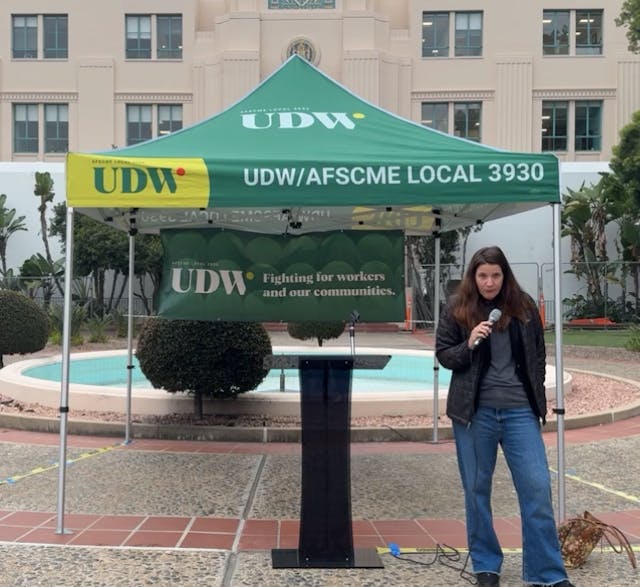All the Roads of Madera
September 23, 1965. In the early morning hours, a small group of men prepared to attack a Mexican army base in the Chihuahua mountain town of Madera.
Led by rural school teacher Arturo Gamiz and Dr. Pablo Gomez, the guerrilleros of the Popular Guerrilla Group (GPC) were escalating a more than year-long campaign of sabotage and clashes with police into a frontal assault for land, liberty and the revolutionary overthrow of the government. Tipped off about the pending attack, government troops were ready and when the shooting began the tide quickly turned against the insurgent group. Eight attackers, students and small farmers, perished in the suicidal assault, as did several soldiers, while a half-dozen other guerrillas somehow managed to escape to fight another day.
The slain rebels were infamously tossed into a common grave by soldiers and buried to the sarcastic words of Chihuahua Governor Praxedes Giner: “They wanted land so give them land until they are sick of it….!”
Giner, ironically, was a veteran of Pancho Villa’s revolutionary army, according to biographical accounts.
Partly inspired by the success of the 1959 Cuban Revolution, the GPC was among numerous guerrilla focos that spread throughout Latin America in the 1960s. In Mexico, Madera was at the core of a dialectic of repression, resistance, reform, retrogression, resistance, and repression that continues to this day.
As students, small farmers and workers mobilized to challenge the one-party PRI rule of the 1960s, the government cracked down on movements in Chihuahua and carried out bloody massacres in the southern state of Guerrero and Mexico City. In response, and taking a cue from Madera, left-wing guerrilla organizations and cells with a polyglot of names and acronyms proliferated across the country -MAR, Los Lancandones, the National Liberation Forces, PROCUP, the Party of the Poor, the September 23 Communist League, etc.
Decades later, the survivors of the armed movement regrouped, recruited a new generation of revolutionaries and publicly burst onto the scene with their guns blazing as the Zapatista National Liberation Army (EZLN) in Chiapas in 1994 and the Popular Revolutionary Army (EPR) in Guerrero, Oaxaca and other states in 1996.
Madera was a critical link in a chain of events that looped into the 1970s Dirty War, the political reforms that legalized the Mexican Communist Party and laid the basis for the current multi-party system, the dismantlement of the once-powerful Federal Security Directorate, and the growth of organized crime syndicates popularly referred to as drug cartels. Through this process the carrot and the stick were interchangeable.
A part of this complex and ongoing saga is explored in a new book authored by several Mexican academics, translated into English as, From the Assault on the Madera Fort to the Reparation of Damages to Victims of the Past: A Comparative Experience of Chihuahua and Guerrero .
“This is the reconstruction of a piece of social history of Chihuahua and Guerrero,” co-author Gil Arturo Ferrer Vicario told FNS. “This is to show evidence that the people of Mexico have historically struggled for better conditions of life.”
The book is dedicated to the late, acclaimed Mexican writer Carlos Montemayor, whose meticulous research produced the historical novels, Guerra en el paraiso (War in Paradise, 1997) and Las armas del alba (The Arms of Dawn, 2003 ). The first book tells a tale of the guerrilla uprising and Dirty War in Guerrero, while the second work is a suspenseful story of the 1965 Madera attack.
“Originally from Chihuahua, but with his heart in Guerrero,” Ferrer quipped about Montemayor, whom this writer had the privilege of meeting and interviewing about 12 years ago.
A history specialist and researcher at the Autonomous University of Guerrero in Chilpancingo, Professor Ferrer was recently in Las Cruces to discuss academic exchanges with New Mexico State University.
In an interview, Ferrer delved into the history of guerrilla organizations in the mountains of Chihuahua and Guerrero, government polices of repression and reform and the contemporary socio-economic conditions in two states that have played transformational roles in Mexican history.
Enriching his academic research, Ferrer possesses first-hand knowledge of his subject from having once worked as a rural school teacher in the Chihuahua mountains.
According to Ferrer, northwestern Chihuahua of the early 1960s was dominated by big landlords, or latifundistas, who controlled huge swaths of territory. The unfulfilled promise of land to the peasants stemming from the 1910 Revolution was further stymied in the 1930s when the agrarian reforms of President Lazaro Cardenas, who was successfully promoting the establishment of collectively-owned land units known as ejidos elsewhere in the country, were blocked by the local elite in Chihuahua.
With popular demands frustrated by an authoritarian political system, Chihuahua activists like Arturo Gamiz and Pablo Gomez turned to arms.
Although the Madera rebellion was squashed by the state, Ferrer added that the government headed by President Luis Echeverria (1970-1976) finally undertook land reforms in northwestern Chihuahua, creating among other institutions, one of the biggest communal landholdings in Latin America, the timber-rich Ejido Largo Maderal near Madera.
“The guerrilla movement was defeated militarily on September 23, 1965, but the Mexican government was obligated and understood that the causes of the guerrilla movement were just and it was necessary to address them,” Ferrer said.
In Ferrer’s home state of Guerrero, discontent with rural bosses and authoritarian politicians also boiled over in the 1960s, and was met by bloody government massacres in Chilpancingo, Iguala, Atoyac and Acapulco.
Consequently, Guerrero political leaders Genaro Vazquez and Lucio Cabanas formed their own guerrilla bands and were answered with the Dirty War, a counterinsurgency campaign of scorched earth tactics, torture and enforced disappearance. As was later documented by a special prosecutor active during the presidency of Vicente Fox and separately by the official Guerrero Truth Commission in 2014, hundreds of people were snatched by government security forces never to be seen again.
In Guerrero, post-Dirty War governments alternated between the carrot and the stick.
Today, the mountainous areas of Chihuahua and Guerrero where armed revolutionary movements operated in the 1960s and 1970s are again the scene of armed battles, but this time the main protagonists are rival underworld groups competing for control of the lucrative opium poppy crop that is processed into heroin and exported to an eager U.S. market.
Despite reforms, Ferrer said poverty saps the land and a new type of big landlord- foreign mining companies-have entered the scene and necessitated a “new struggle.”
Ferrer is from Iguala, Guerrero, a city which has figured prominently in Mexican political history during pivotal junctures in each of the last three centuries. The historian happened to be visiting his home town the fateful night of September 26, 2014, when police and presumed cartel gunmen killed six people and forcibly disappeared 43 male students from the Raul Isidro Burgos Teachers College of Ayotzinapa, the alma matter of Genaro Vazquez and Lucio Cabanas.
Ferrer recalled hearing gunshots outside at about ten o’clock in the evening, but did not really find out what had happened until the next day when he saw a bus riddled with bullets and blood in the streets.
September 26 raised the specter of a new Dirty War, and Mexico was plunged into its worst political crisis in years; semi-dormant guerrilla organizations stirred.
Joining Ferrer in the interview was Rosa Maria Velazquez, a native of Madera who now lives in New Mexico. Velazquez said she was a young girl at the time of the 1965 uprising so has sketchy memories of the event, but recalled her mother talking about bodies in the town.
“We didn’t know the history of that time. I was very small at the time and saw parachute troops, but we didn’t know the dimension of the problem,” she said.
Velazquez seconded Ferrer’s assessment of current economic conditions in Madera, adding that “no sources of work” exist and many people migrate to El Norte in order to survive. In fact, one could even speak of a route of Madera that passes through southern New Mexico over to Albuquerque and up to Denver.
Although commemorative events for the 1965 uprising have been held in Madera over the years, the history of the time is mostly unknown by the newer generations, Velazquez said. This year, however, the Golden Anniversary of the Madera uprising might be different. Both Ferrer and Velazquez interest is growing about a major event planned for September 23 this year that will examine the history and legacies of the 1965 movement.
“It’s important that the Mexican population knows that they enjoy certain freedoms not only as a result of the state, but because of the struggle of the Mexican people,” Ferrer said. “In reflecting, the crisis isn’t going to be resolved by the rulers or political class. We have to reconquer (social gains)…”






